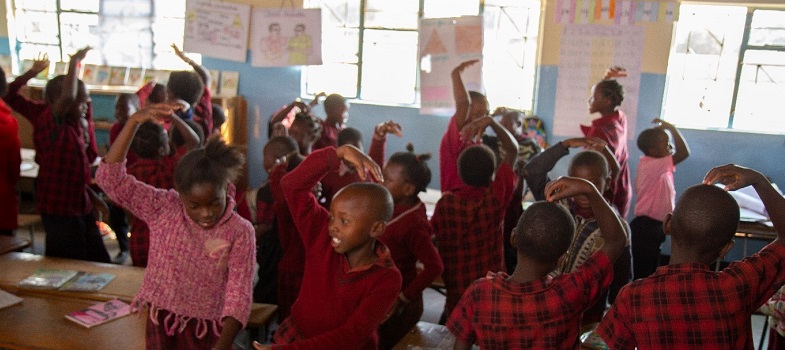Training guide
View
3. Using group work in your classroom
3.1. Planning group work
When you are introducing the group work:
- Put learners in groups. Don’t make them too big. Groups of 3–6 mean that everyone can contribute.
- Once learners are sitting in their groups, tell them how you expect them to behave (e.g. to respect each other, listen, contribute).
- Give out individual roles (e.g. a spokesperson or a recorder).
- Explain the task clearly and write it on the board.
- Tell the learners what they have to do, and how long they have.
- Ensure they understand what you expect of them. A good way of doing this is to ask one or two to explain to you what they have to do. This is very important because if they do not understand what they have to do, the session will get off to a bad start.
- Allow learners to ask questions before you start and be helpful with your answers.
|
Remember Olivia who was teaching Grade 4. Did you notice that…
|
While learners are working in groups:
- Walk around the groups and check how they are doing.
- Give them time to work things out for themselves. If you give them answers too quickly, they will rely on you rather than on themselves.
- If necessary, repeat your instructions, or respond to a question with a question. For example, ‘what do you think would be best?’
- Be positive about how learners are doing and help them where necessary.
- If the task enables you to carry out formative assessment, be ready to make notes about the contributions of individuals as you are observing the learners at work.
To finish the group work
- End with a whole-class session. Try to make the final session an exchange of ideas and avoid repetition as learners will get bored and stop listening. You could:
- Collect one idea from each group about something they have learnt.
- If they had to make a poster or picture, display the pictures and give them time to walk around and look at each other’s work. Ask general questions about which posters learners liked and why.
- If they all researched something different, they could give a short presentation (but not if they all considered the same question as it will become repetitive and boring).
- Think about how well you did in managing the group session. In your Teacher Notebook, write down what went well, and what you could have done differently to make the groups more effective. Use this information to develop your techniques for the next time and note your own improvement and that of your learners.
